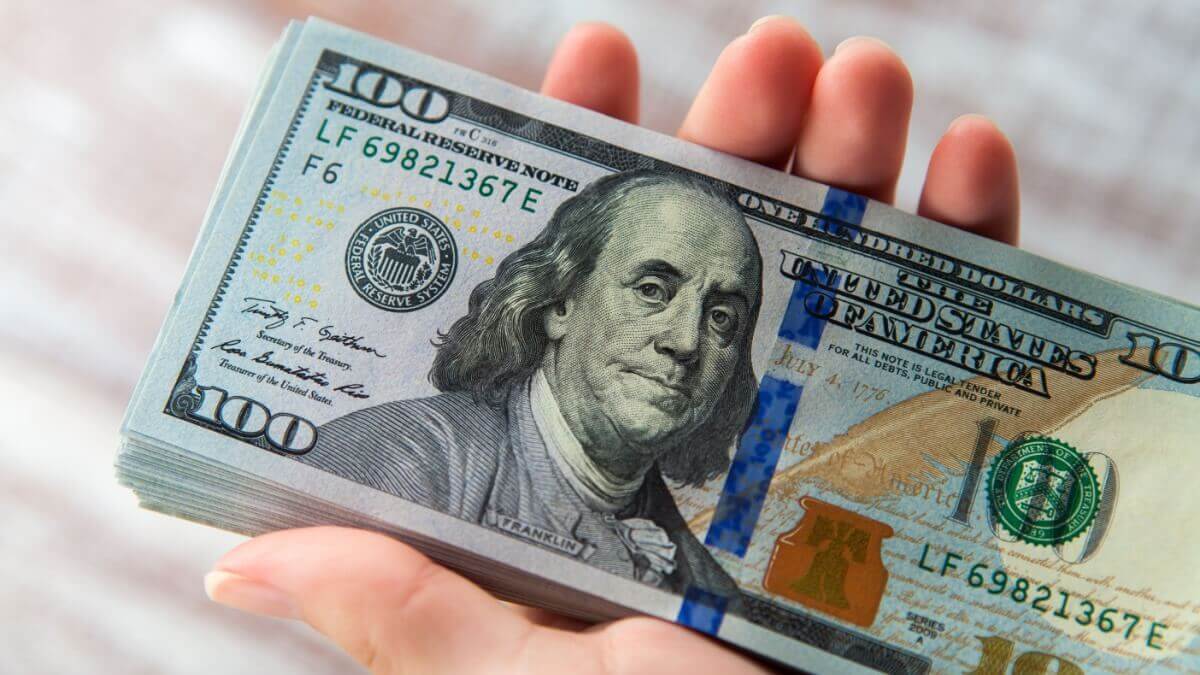How to delete your Remitly account: US guide
Find out how to delete a Remitly account step-by-step and what other alternative transfer services are available.

Money orders are a popular way to send cash, but they come with limits. In this article, you'll learn about money order limits for USPS, major US banks, and other providers.
If you need to send money abroad, especially if it's more than 1,000 USD, consider using Wise. It's a fast, cheap, and easy way to send high amount transfers to over 160 countries.
| Table of contents |
|---|
Money orders are a secure way to send or receive payments. They're like pre-paid checks. You buy them with cash or a debit card, fill them out like a check, and they're guaranteed by the issuer.
This makes money orders safer than cash and more accessible than personal checks.
| Learn where you can get a money order in our full guide. |
|---|
USPS offers two types of money orders:
| Type | Limit |
|---|---|
| Domestic money order | Up to 1,000 USD¹ |
| International money order | Up to 700 USD (500 USD for El Salvador and Guyana)² |
If you need to send more money, you can buy multiple money orders.
If your daily total of purchased money orders is 3,000 USD or more, you'll need to complete a Funds Transaction Report (FTR) and show an acceptable form of ID.³
3,000 USD is three domestic orders or about four international ones, depending on the destination.
A smart option if you’re sending money overseas: meet Wise.
| With Wise, you can send up to 1,000,000 USD per wire transaction to 160+ countries, with the mid-market exchange rate and low, transparent fees. |
|---|
Over 50% of Wise payments arrive instantly* — and all Wise transfers are deposited directly into your recipient's bank account for convenience.
No ongoing fees, no hidden charges and no hassle — just fast, transparent international transfers that can beat the banks.
🚀 Get started with high amount transfers
| See how Wise compares with international bank transfers in our full guide |
|---|
*Transaction speed claimed depends on funds availability, approval by Wise’s proprietary verification system and systems availability of our partners’ banking system, and may not be available for all transactions.
Banks and credit unions also allow you to send money orders. Some offer both domestic and international money orders, but not all.
Most banks cap money orders at 1,000 USD.
The 1,000 USD limit helps banks comply with anti-money laundering laws. If you need to send more than 1,000 USD, banks might suggest sending a cashier's check instead. They're similar to money orders but can be issued for larger amounts.
It's important to know that while the limit on money orders is consistent across most banks, the fees can vary.
Some banks offer free money orders to certain account holders, but others charge a flat fee - typically around 5 USD. Always check with your bank for the most current information on limits and fees. Learn how to fill out a money order to avoid hiccups, too.
Money service providers offer money orders too. They have similar limits to banks but may offer more options for international transfers. MoneyGram, Western Union, and Ria are well-known for international money transfers.
You can expect the money order limit to be 1,000 USD with most providers.⁴ For international money orders, the limit can vary based on multiple factors, including the target country.
When choosing a provider, consider more than just the money order limit. Look at fees, exchange rates (for international transfers), and processing times.
It depends on the issuer. USPS caps at 1,000 USD for domestic and 700 USD for most international orders. Banks and other providers usually max out at 1,000 USD, too.
If you need to send more, you'll need multiple money orders or another method.
Keep in mind that you'll have to pay a service fee for each money order you send, so it can get costly.
Typically, not in one go. Most issuers cap at 1,000 USD, and you'll need to buy multiple money orders to send more than that. There may also be daily limits that apply.
For large amounts, consider alternatives like cashier's checks, wire transfers, or Wise. These methods work for bigger sums and come with added security.
If you're buying multiple money orders to send a large amount, it might raise eyebrows. It's not illegal, but it could lead to questions about why you're not using other methods.
No, money orders and cashier's checks aren't the same thing. Both are secure payment methods, but they have key differences.
Money orders typically cap at 1,000 USD, and cashier's checks can be issued for much larger amounts. You can also purchase a money order from locations like post offices, banks, and convenience stores. Only banks can issue cashier's checks, and you usually need to have an account with the bank to get one.
Money orders are great for sending smaller transactions or if you don't have a bank account. People typically use cashier's checks for larger transactions like buying a car.
Banks and money service providers have their own rules, but you typically can't send large amounts. For example, when sending a USPS money order, if your daily total is 3,000 USD or more, you'll need to complete a Funds Transaction Report (FTR) and show an acceptable form of ID.³
Buying lots of money orders in one day can also look suspicious. It's not wrong, but it might trigger extra checks. If you need to send a large amount, ask about alternatives. You might save time and avoid unnecessary scrutiny.
Money orders are handy, but they have limits. Most cap at 1,000 USD, with USPS offering up to 700 USD for international money orders. If you need to send a large amount, consider alternatives like cashier's checks or bank transfers.
An easy way to send money abroad? Wise. It's fast, cheap, and secure, especially for larger amounts.
Sources:
Sources checked 09.05.2024
*Please see terms of use and product availability for your region or visit Wise fees and pricing for the most up to date pricing and fee information.
This publication is provided for general information purposes and does not constitute legal, tax or other professional advice from Wise Payments Limited or its subsidiaries and its affiliates, and it is not intended as a substitute for obtaining advice from a financial advisor or any other professional.
We make no representations, warranties or guarantees, whether expressed or implied, that the content in the publication is accurate, complete or up to date.

Find out how to delete a Remitly account step-by-step and what other alternative transfer services are available.

Find out whether Remitly or Wise is better for you in this comprehensive comparison guide, covering fees, limits, transfer times, and more.

Trying to decide between using Ria and Remitly? Find out the main differences, including features, limits, and fees, in this comprehensive guide.

Trying to decide between using Western Union and WorldRemit? Find out the main differences, including features, limits, and fees.

Find out what Remitly is and how it works, including types of money transfers, applicable charges, and limits.

Read on for everything you need to know about sending and receiving wire transfers with Remitly.